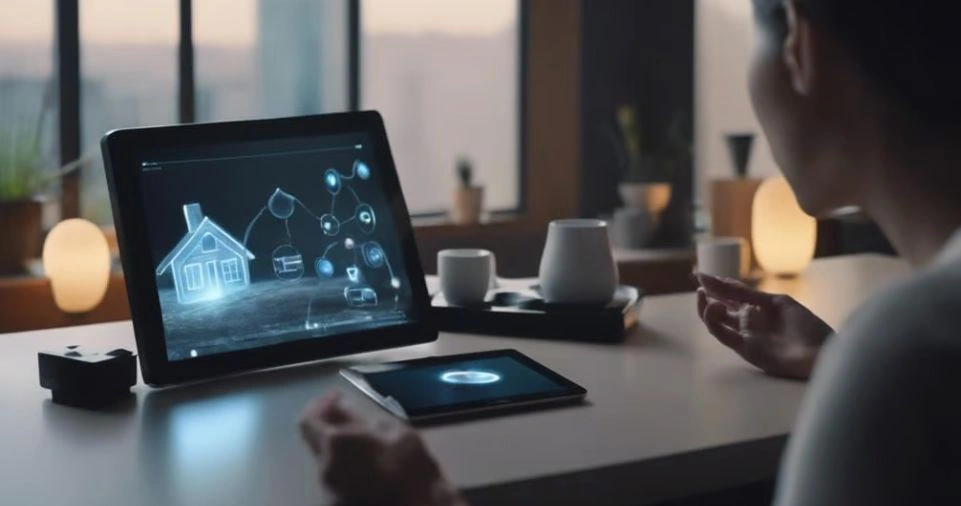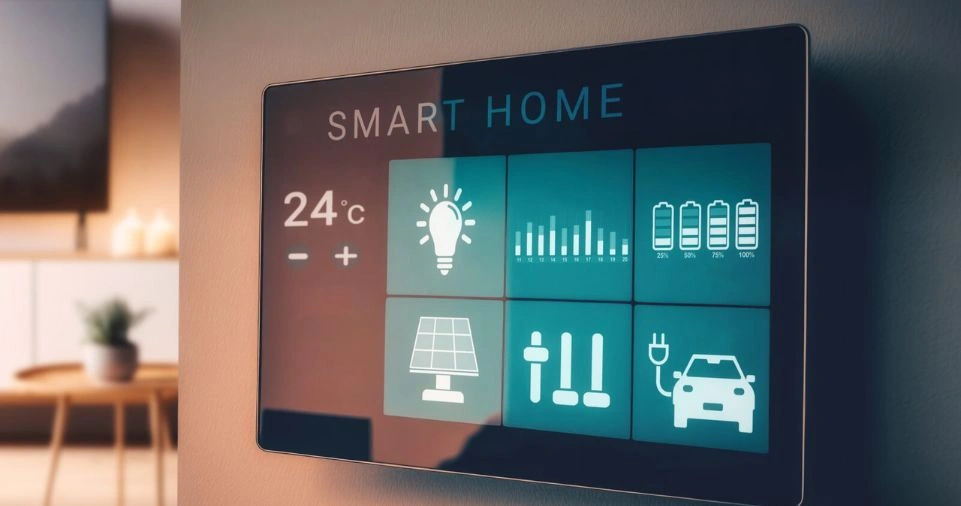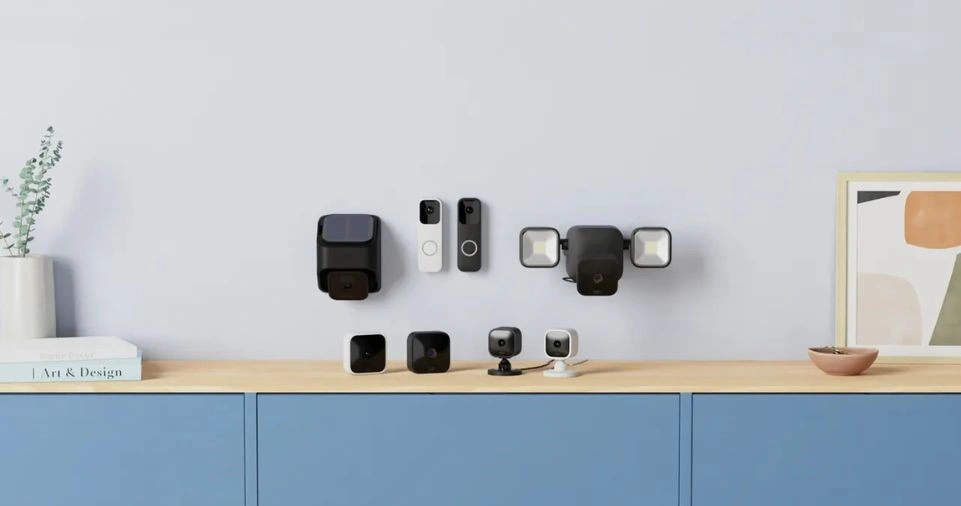Building your first smart home on a budget is entirely possible with the right approach.
By selecting cost-effective, high-quality devices and focusing on key areas such as energy efficiency, security, and convenience, you can create a fully functional smart home without overspending.
From smart thermostats to security cameras and voice assistants, there are numerous budget-friendly options available.
This guide will walk you through the essential steps, helping you make informed decisions and maximize your investment.
Whether you’re starting small or looking for gradual upgrades, smart home technology can enhance your lifestyle while saving you money in the long run. Let’s dive into how to build a smart home without breaking the bank.
Understanding the Basics of Smart Home Technology
Before diving into the process of building a smart home, it’s essential to understand what smart home technology is and how it works.
At its core, a smart home consists of devices that connect to the internet, allowing you to control them remotely using a smartphone, tablet, or voice commands via a smart assistant (such as Amazon Alexa, Google Assistant, or Apple Siri).
These devices are typically designed to make daily tasks easier, improve home security, and optimize energy usage.
Common types of smart home devices include:
- Smart Lights: These allow you to adjust lighting remotely, set schedules, or control lights with voice commands.
- Smart Thermostats: These devices automatically adjust the temperature in your home, learning your preferences and reducing energy usage.
- Smart Plugs and Outlets: These can turn any regular appliance or lamp into a smart device, allowing remote control.
- Smart Security Systems: These include cameras, doorbell cameras, and motion detectors that improve home security and can be monitored remotely.
- Smart Speakers: These voice-controlled assistants can act as the hub for your entire smart home, connecting all your devices together.
By selecting the right devices, you can build a smart home that enhances comfort, security, and efficiency while sticking to your budget.
Setting Your Budget and Prioritizing Needs

The first step in building a budget-friendly smart home is to define your budget and prioritize the devices that will provide the most value to you.
A typical smart home can range from a few hundred to a few thousand dollars, depending on the number of devices and the complexity of the setup.
Key Factors to Consider:
- Security: If you’re most concerned about security, investing in smart cameras, doorbell cameras, and smart locks should be your priority.
- Energy Efficiency: If you want to save on your utility bills, focus on smart thermostats, smart plugs, and energy-efficient lighting.
- Comfort and Convenience: Devices like smart speakers, lights, and smart plugs can improve comfort and convenience without costing much.
For example, a basic setup could include a smart thermostat, a few smart bulbs, and a smart plug to control your TV or other devices remotely. Once you’re comfortable with the technology, you can gradually expand your smart home.
ALSO READ: How to Stay Updated with the Latest Tech Trends in 2025
Choosing the Right Smart Home Devices on a Budget
There are many budget-friendly smart home devices available in the market today. Here’s how to select the right ones for your needs:
Smart Lights
Smart bulbs like the Wyze Bulb or TP-Link Kasa Smart Light Bulb are excellent choices for those on a budget.
They allow you to adjust brightness, set schedules, and control them via an app. While premium brands like Philips Hue offer more features, they can be quite expensive.
Smart Plugs
If you’re new to smart home technology, start with smart plugs, which are affordable and can convert any device into a smart one.
Popular options include Amazon Smart Plug, TP-Link Kasa Smart Plug, and Wyze Smart Plug. These plugs allow you to control lamps, fans, or even your coffee maker remotely.
Smart Thermostats
A smart thermostat can save you money on energy bills, especially during the winter and summer months.
The Google Nest Thermostat or ecobee SmartThermostat are good options, but if you’re on a strict budget, you might also consider Wyze Thermostat or Embertec Smart Thermostat, which cost significantly less but still offer basic features like temperature scheduling.
Smart Security
Security is one of the most important aspects of a smart home. Budget-friendly options like the Ring Video Doorbell or Wyze Cam v3 offer high-quality video and motion detection features without a hefty price tag.
Another option to consider is Blink Outdoor, which is affordable, weatherproof, and ideal for outdoor surveillance.
Smart Speakers and Hubs
Having a smart hub makes it easier to manage all your devices from one place. If you’re just starting out, a voice assistant like Amazon Echo Dot or Google Nest Mini can serve as both a speaker and a hub, enabling you to control devices with voice commands. They also come at a very affordable price.
DIY vs. Professional Installation
When building a smart home on a budget, it’s important to consider whether you want to handle the installation yourself or hire a professional.
For most devices, DIY installation is straightforward and doesn’t require professional help.
Many smart home products come with easy-to-follow instructions, and you can set them up using a mobile app.
However, some advanced devices like smart thermostats or security systems may require more expertise, especially if you have a more complicated home setup.
If you choose to hire a professional, be sure to get a few quotes to compare prices.
Smart Home Automation on a Budget

One of the best aspects of a smart home is automation. With smart home automation, you can set rules and schedules to make your home more efficient.
For example, you can set your smart thermostat to lower the temperature when you’re not home, or program your lights to turn on and off at certain times.
To automate your devices, you can use apps like Amazon Alexa, Google Home, or Apple HomeKit, all of which are free and compatible with most devices. These apps allow you to create routines, such as:
- Good Morning Routine: Set your lights to turn on, adjust the thermostat to your preferred temperature, and play music when you wake up.
- Away Mode: Automatically lock the doors, turn off lights, and adjust the thermostat when you leave the house.
- Night Mode: Set the lights to dim and security cameras to activate when you go to bed.
You can also create automation based on triggers like motion detection or time of day.
ALSO READ: The Benefits of Keeping Aquarium Fish: Why They’re More Than Just Pets
Saving Money with Bundles and Discounts
When purchasing smart devices, look for bundles or discounts that can help you save money.
Many retailers offer bundle deals that include a smart speaker and smart bulbs or plugs for a discounted price.
Additionally, subscribing to promotional emails or using coupon websites can help you find sales and discounts on smart home products.
Many smart home brands also offer periodic sales events, like Amazon Prime Day or Black Friday, where you can snag excellent deals on a variety of devices.
Building a Scalable Smart Home
One of the advantages of a smart home is that you can start small and gradually add more devices as your budget allows.
For example, you might start with a smart thermostat and a few bulbs. Once you’re comfortable with these, you can expand by adding security cameras, smart plugs, or other devices that align with your needs.
To keep your smart home on a budget, don’t rush into purchasing everything at once.
Focus on building a system that fits your immediate needs and upgrade over time as your budget increases.
Maintaining and Troubleshooting Your Smart Home

As your smart home grows, you’ll want to ensure that everything continues to work efficiently.
Regularly check for firmware updates on your devices to ensure they have the latest features and security patches.
If something isn’t working properly, the first step is usually to restart the device or check the connection.
Many smart devices rely on Wi-Fi, so ensure that your network is stable and strong enough to support all the devices in your home.
Budget-Friendly Smart Home Setup Example
Here’s an example of a budget-friendly smart home setup to get you started:
| Device | Brand/Model | Price Range | Key Features |
|---|---|---|---|
| Smart Thermostat | Wyze Thermostat | $50-$60 | Energy-saving, remote control via app |
| Smart Plugs | TP-Link Kasa Smart Plug | $15-$25 | Remote control for lamps, appliances, scheduling |
| Smart Bulbs | Wyze Bulb | $10-$15 | Adjustable brightness, voice-controlled, energy-efficient |
| Smart Security Camera | Wyze Cam v3 | $30-$40 | 1080p video, motion detection, two-way audio |
| Smart Speaker | Amazon Echo Dot 4th Gen | $30-$50 | Voice control, multi-device management |
This setup allows you to control your home’s temperature, lighting, appliances, and security, all while staying within a budget.
As you become more familiar with smart home technology, you can continue to add devices to your setup based on your needs and preferences.
ALSO READ: Why House Clearance Chelsea Services Are Perfect for Your Flat Clearance in Chelsea
Conclusion
Building a smart home on a budget doesn’t have to be difficult or expensive. With careful planning and the right selection of devices, you can enhance the comfort, security, and energy efficiency of your home without breaking the bank.
Start with the essentials—like smart lighting, plugs, and thermostats—and gradually expand as you grow more comfortable with the technology.

